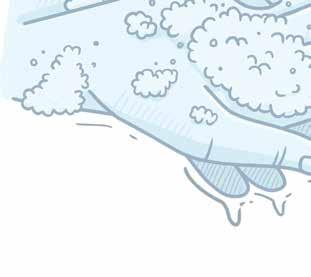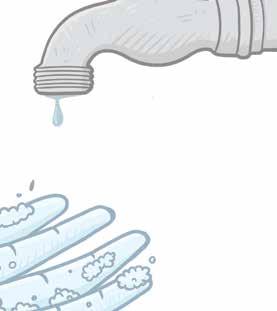






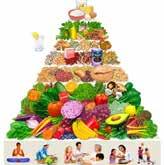
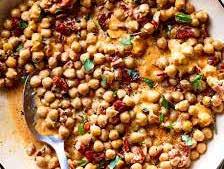
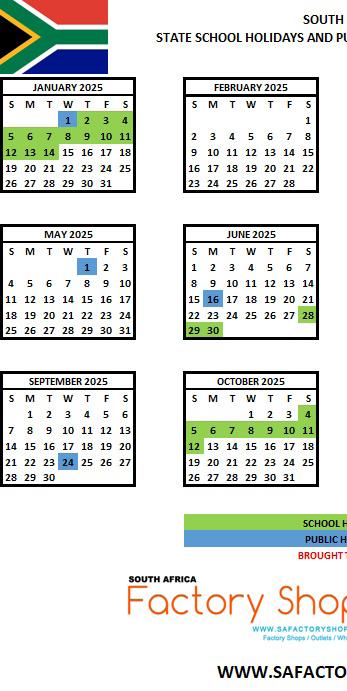













Time is now and already past in some instances.
That dreaded word: applications! but it need not be like that. There are a few tips and also a new approach: the unsolicited application. But that requires some work. however, it can be very successful.
tired of the SIM card? well, the eSIM is the solution. Read on. Something new. Althetics World Championship finished 21 September. But maybe it will all shift to winter months? it is too hot now.
The goal of the application is the interview. That is what counts! read on and see how we can prepare for that.
We have received articles
Advantage learn: Math Huyundai, Mr. Zweli Mnisi: ship for 30 learners Isuzu, Nandi Matomela:
Meropa Communication: ant and not just cruising Innocomm, Talitha: Love a difference. Hunger no
But also the unusual: a Day, Ada Lovelace day
Good read!
Hola is here to give you a break from all We are also serious, but it is now called
articles from:
is in crisis. Let’s do something
Mnisi: Driving dreams via mentor-
Matomela: Tree planting for arbor week.
Communication: Grade 11 is mighty importcruising along. Love Trust and Soul Food making no more! capella music, movies, Vegan and much more.

all the school stuff. called edutainment.
Sybil Otterstrom Editor and CEO
11 Applications - it is now
12-13 What are applications really?
14-15 Try this: the unsolicited application
16-17 The interview is the next step
18-21 Love Trust and Soul Food are active
22-24 Huyundai: driving dreams by mentoring
28-31 Grade 11 is important!


26-27 TVETs - Centre for Entrepreneurship
32-33 Isuzu: Tree planting for arbor week

46-49 Athletics World Championship Science
42-43 AI writing songs - and voted tops

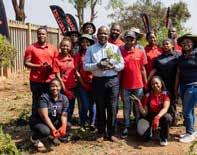
50-53 eSIM - no more tiny plast pieces September
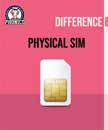

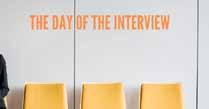




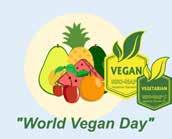


Want to be a contributor? Wanting to write like a pro?
You CAN!
look firther and see how you can become one.
... and it is a good feeling to entertain and inform.
Masiziba Hadebe is doing her Master’s in Agricultural Economics at the University of the Free State (UFS). She is driven to make a change and is a passionate volunteer for community projects. She loves reading and writing about science, agriculture and anything in between. She believes you can wear a smile whatever the weather!
My name is Lerato Pitso. I am from Maseru, Lesotho. I am a Sociology and Criminology student at UFS and Miss Supranational Lesotho 2023. When I’m not a model and a student, I write about my philosophies on life as well as expressing my feelings on paper. I hope that my views will aid in the social development of the next person.

And we are honoured to also have industry-views from:
Edith Wynne-Trollip: - Curriculum Support and advise, Overberg District
Nadia Hearn - Founder of Get-Published
Ashalia Maharajh: - Founder & Director, Sivuka Consulting (Pty) Ltd
Thozamile Mvumvu: - CFE Programme Manager, False Bay TVET
Daniel Roos - Account Executive, Transform Marketing

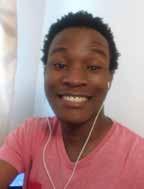

Artvilla Dakamela, 22, another wizard from the literature world, he is an Accounting student at the University of the Free State. He has written for the Initiative for Creative African Narratives (iCAN) amongst others. He currently resides in DurbanKZN - and is a very enthusiastic reader and writer.
My name is Molatelo Kate Kgatla, I’m 24 years old. I was born and raised in Lenyenye. I’m a grade 2 teacher at Vunza Teddy Bear Learning Academy, an author of a book titled her jouney as a young mother. I became a mother at 17. It influenced me to write about my personal journey to try and help someone that could be going through the same. I love writing and I love my 7 year old daughter and life.


Lesly Malose Mahapa is a singer/writer/poet. He started writing at the age of 14 and has since been on a journey to pursue his music and writing career. Lesly is currently working with an indie group ‘MozSouth’ based in Ivory park, Midrand. Lesly is also a brand ambassador for a local clothing line “Boi Boi apparel”

Editor & Publisher
Sybil Otterstrom
sybil@romele.co.za
Advertising sales
Next
011 614 5046
076 360 1792
sybil@next-level.co.za
Publishing
Romele
Eleanor street
2094 011 614 5046/076 360 1792
Enquiries
Romele



Time to consider what to do after hi-school. It will form the type of application you will have to submit.
Let us look at it: deadlines for university entrance! Make sure you are on top of it. Some deadlines have already passed. However, there are short-term courses at universities so look at the options.

TVETs: consider the short-term courses. Again, these are there for you to get qualified for a job. TVETs are the big thing overseas and they will form a part of our future.
Jobs: not easy at all. One job and a million applicants it feels like. What chance do I have? Well, one is going to get the job. So why not you?
We might see the dreaded form to complete. It is hard to get ones abilities and personality across in a form. But there can be other means.
One of the things to consider is the unsolicited application. It will require more than just filling in a form. However, it represents the opportunity to do a bit of research, understanding what the company needs and most importantly: offering a chance to present yourself in a meaningful way.
Good luck!
There are so many types of applications out there. We apply for a place at university, we apply for a job, we apply for a loan, we apply for …. Anything.
There are many things that are ‘easy’: applying at university is a rather mechanical process. We fill in the form (online), attach the supporting documents and that is it. If we match the criteria, we are in luck. A machine can do it. And by and large: there are no appeals processes.

The best part of university applications are online. There are no walk-in options anymore. If we look at the format (I tried a few), there are plenty of things to fill in. It is not complicated, but be aware: if it is not done correctly, it will be rejected.
If you should apply for a job in any state institution, there are also forms to fill in. I quote from the website here:
“As a rule vacancies are advertised in a Public Service Vacancy Circular compiled and issued weekly by the Department of Public Service and Administration (DPSA).
The Public Service Vacancy Circular informs public servants about vacancies within the Public Service. Persons who are not Public Service

employees but interested in the positions advertised should first establish from the advertising department if they can apply. The contact details of the advertising departments are provided in the Circular” And then the form Z83 to complete.
All in all, complex, but not difficult!
Let us turn to applying for a job. This might be more complex as there may or may not be a form to complete.
Big companies (bank, insurance) do operate with a form, and they (typically) look at applicants after high-school.
There would be a section where you can express yourself. Who are you after all? And why apply with this company?
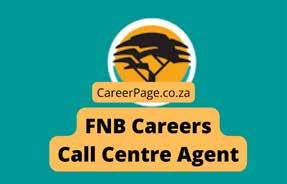
This is where creativity comes in. But this is much more involved, because now you have to talk about YOU. The key word here is honesty!
That leads into what we are going to discuss as well: the unsolicited application.

The success rate can be higher, but it requires a lot of ground work. You have to research what the company is all about.
Read on – there is an article on that as well!

Is it even worth trying to put a job application to a company if they are not advertising any jobs? Is it waste of time?
I found some interesting viewpoints here and here. Although it requires a lot more research and creativity in writing, it can be a better option than just chucking an email at a job advert.
What the experts above are saying is that the unsolicited job application can be very effective, but it requires a lot more than just emailing a CV.
Research is the key word here. Find a company where you believe you can add value. If you are interested in say working in a lab, find the pharmaceutical company where its values speak to you.
Then more research: what do they do? What jobs are there you could fill? Who is the HR person? Who is head of the unit where you would love to work?

Of course some of it will be available on the website, but otherwise phone reception. Get the names and email addresses.
There is a little hint from the experts. If you write to a BIG
company, they might have a very streamlined HR unit. It is possible to get caught in red tape. Go for the not so big companies. The HR unit may just be one person and it might be possible to engage with the unit head.

Now to writing!
It has to be impeccable and it has to show you have researched it. Talk to them! Sentences like “ I have seen from your website that you have a new contract and that might mean you will need committed people soon”.
Describe who you are and why you want to work for them. Tell them how YOU can add value to their organization. Be very specific. “because I have done a course in XX, I can fit into your new unit…”
Show commitment. Offer them the opportunity to interview you at least.
The real importance is to show them who you are and that may never be possible in a standard job application. This is your chance to shine and to put forward your value to them in your own words.
Remember as well: the objective of the application is one thing only: get to the interview!

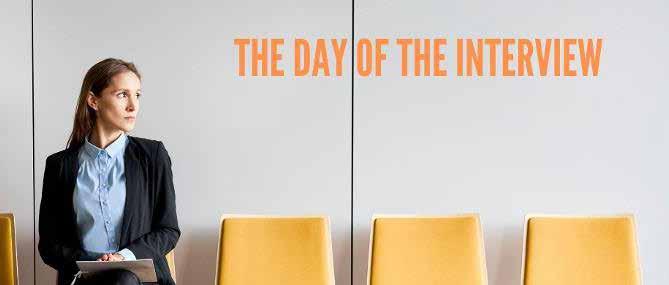
This is the horrible thing: We will in all likelihood have to go for an interview, one day. To get that first job.
What to look out for? Plenty, but here are a few.

Don’t be late. Will I give you an extra chance? Yes, I will. But you start from minus something. Accidents can happen, so I will always try to look at it from a positive perspective, and so will other employers. Trust me on that.
Say sorry for being late. Briefly explain it so it is possible to see it is not your fault. Because it would not be your fault, would it? You would start out in proper time. That is what I would assume. And any other potential employer as well. So, get over it. And compose yourself.
Dress code. It is difficult to over-dress. Remember you are going into a company where they might be serious. You could say, hey, but this is a fancy clothing store selling gothic clothing. Yes, but that does not mean they are not serious, does it? So, whichever way, dress properly. If you
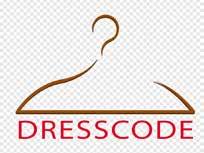
do not know how to dress properly, well, somebody gave you a brain to think with, so use it. And you do know.

Disasters. You get offered a cup of tea and you spill it all over the person’s desk. Papers, calculator, keyboard, mouse and anything else. It can happen. Get on with it. Have I ever spilled my tea in the office. Yes. So I will not let it detract.
I choke because I am so nervous. As a prospective employer I will try to help you get over being nervous. Why not? I called you to the interview because I think you could do the job. Do you really think that a few seconds can ruin it all? It can’t.

The most important thing: I have selected YOU to come to an interview out of maybe 200. That means that what you wrote resonates with what we want as an employee. That means you are one out of five called in.

That means YOU are sought after. Realising that should calm you down. Because YOU have the right to ask questions (don’t interrogate me though). YOU are in demand and now YOU need to find out if this is something for you.
You have just as much upper-hand as the future employer you are sitting across.
Doesn’t that make you feel better already?


This article has been provided by Talitha from Innocomm.
When children arrive at school hungry, learning becomes an uphill battle for them. It need not be like that.
Across South Africa, malnutrition and stunting continue to rob young learners of opportunity, leaving devastating long-term cognitive gaps that are almost impossible to bridge.
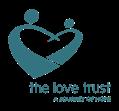
It’s for these reasons that The Love Trust and Soul Food, two faith-based non-profit organisations, have committed to working together to ensure that children not only have access to quality education but also the nutrition needed to thrive.
This long-standing partnership, which began in 2019, has been renewed with greater vigour following Mandela Day 2025, when Soul Food pledged to support The Love Trust’s Nokuphila School in Thembisa with breakfast meals indefinitely.
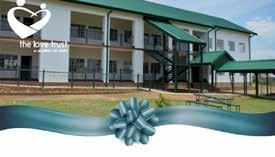

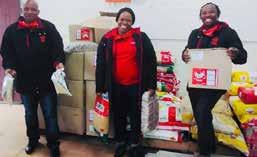
It is a commitment that recognises the equal importance of food and education in breaking the cycle of poverty.
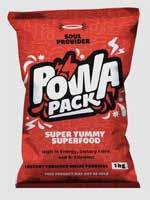
Soul Food provides between 1.5 and 1.7 million meals nationally on a monthly basis, feeding over 70,000 children daily through more than 1,000 centres.
“We have always believed that proper nutrition is a human right,” says Thabo Maluleke, Chief Operating Officer at Soul Food. “It is shocking that 1.7 million children in South Africa, about 27%, are already stunted.
Many of them were never given a fair chance at proper nutrition. By narrowing our focus to children between 0 and 10 years old, we are targeting the crucial window where we can make the biggest difference.”
Their flagship breakfast, the POWA Pack, is a sorghum-based porridge rich in protein, energy and balanced nutrients, designed specifically to combat malnutrition.
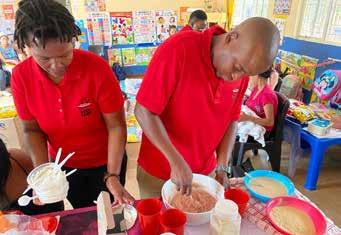
A 1kg bag provides 25 meals and can be prepared as porridge or a shake. For lunch, the POWA Loda, a soy-based product with rice and spices, offers variety and warmth.
These scientifically developed solutions are the product of extensive research and development through collaborations with leading manufacturers and academic partners.

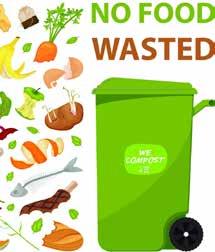

In addition to their signature power meals, Soul Food rescues surplus consumable food nearing expiration from farms and retailer partners such as Woolworths and Checkers. By training their food pickers to ensure it can be safely redistributed, they help prevent millions of kilograms of food from being wasted.
For The Love Trust, who run the Nokuphila School in Thembisa, as well as an extensive teacher training programme, their partnership with Soul Food means more than just meals.
By guaranteeing their learners are properly nourished, Soul Food enables The Love Trust to redirect its resources into other critical areas, such as STEM learning tools and ensuring their learners are safely transported to and from school. It is a collaboration that amplifies both organisations’ impact.

Maluleke explains: “Our partnership with The Love Trust is a no-brainer. They are giving children the gift of education, and we ensure that they are nourished enough to learn. Together, we can go over and above a bowl of food and offer children a real future.”
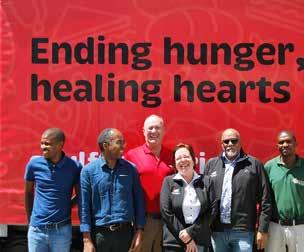
Beyond their current products, Soul Food is investing in innovation. The forthcoming POWA Baby meal, still in research and development, is designed for infants from six months to two years old to bridge nutritional gaps from the earliest stages of life. Other projects include NUTRI TRACK, which will monitor children’s health and nutrition in real-time.
As the collaboration between Soul Food and The Love Trust strengthens, the hope is clear: a generation of young South Africans whose hunger to learn is being fuelled by these organisations, equipping them for a brighter tomorrow.

Maluleke puts it simply: “If we can keep a child in school, learning with energy and dignity, then we have done more than feed them; we have invested in South Africa’s future.”
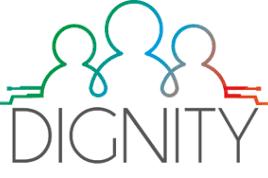
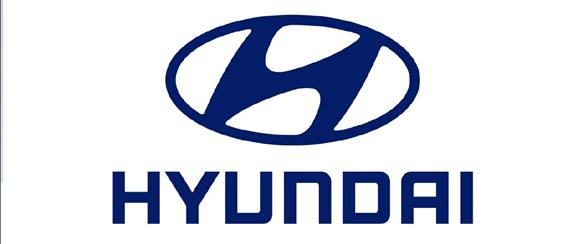
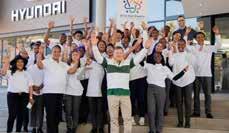
For most South African high school learners, the workplace exists only in their imagination, and this lack of exposure leads to wasted potential and uninformed choices after school.
Now, Hyundai Automotive South Africa is changing that narrative with the launch of Drive Your Dreams, a mentorship programme that guarantees learners an employment opportunity once they leave school or graduate from tertiary education.
Thirty Grade 11 girls and boys from Oosrand Commerce and Entrepreneurship School of Specialisation in Boksburg are the first to benefit.

One of the school’s best-performing learners, 16-year-old Zaakiyah Human, had the distinguished honour of being mentored by Stanley Anderson, CEO of Hyundai Automotive South Africa.
“Women make up less than 20% of South Africa’s automotive workforce and globally they hold less than 10% of leadership positions in the industry.”
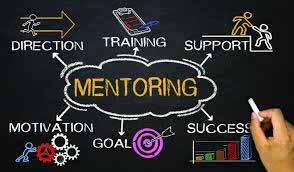
“We want to tackle this imbalance by inspiring more young women to enter and lead in the sector. We want to show that there are careers here for them, and that Hyundai Automotive South Africa becomes their employer of choice.”
A survey of 336 Grade 11s at Oosrand School found that two-thirds of them have never met a CEO or business leader and that, half of them do not have a mentor or someone guiding them towards a career choice. Furthermore, the survey revealed that half the learners would be the first person in their family to go to University or pursue a professional qualification.
“This shows just how removed learners are from the world of work, and why mentorship matters,” says Anderson. “As a company that promotes inclusivity and forward-thinking, we believe that mobility is about more than just moving people from point A to point B. It is about moving lives forward.”
Oosrand School was selected to pilot the two-year mentorship programme because it is the best performer among the Secondary Schools that have received libraries from Hyundai Automotive South Africa.
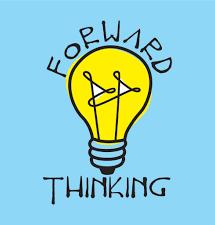
“Through our 22 school libraries, we have invested in literacy and access to knowledge,” says Tamika Mercedes, General Manager for Training at Hyundai Automotive South Africa.
“The materials and resources have made a critical difference in the classroom. Schools that were sidelined, now participate confidently in our Annual Book Quiz, Spelling Bee, General Knowledge as well as dictionary challenges.

“Drive Your Dreams is the next gear. It is about turning access into opportunity. We want young South Africans to see what’s possible beyond the classroom and to know that their dreams are valid and achievable,” added Mercedes.
Oosrand’s 30 top-performing Grade 11s will spend two days a month at the Hyundai Training Academy in Bedfordview, where they will learn about the automotive industry, company culture, communication, time management as well as teamwork.
Each of them will be mentored by an executive or senior manager to be empowered with workplace experience.
When they matriculate in 2026, the top-performer will win a bursary that covers a three-year University Degree in an automotive-related field, with the promise of a job after graduation. The others will be eligible to join the Hyundai Automotive South Africa apprenticeship, sales cadet and learnership programmes.
Anderson says Hyundai Automotive South Africa’s aim is to employ all thirty learners. “All the activities during the mentorship are geared towards these young people working at Hyundai Automotive South Africa and becoming a part of our family.”
This article was provided by Hyundai Automotive South Africa. For more information, please contact www.hyundai.co.za




Knowing yourself and your capabilities


For you to pursue your career choice.
You need to pass your National Senior Certificate!

“ it is in your hands “
- Nelson Rolihlahla Mandela


The Eastern Cape Department of Education encourages learners to choose suitable career path, by collecting information that will help them pursue their career / field of study.

The Technical and Vocational Education and Training (TVET) sector continues to evolve as a vital engine for skills development, employability, and enterprise creation. A key driver of this evolution has been the Centres for Entrepreneurship (CFE’s) and Rapid Incubators, which not only provide short-term courses but also a holistic environment for entrepreneurship development.
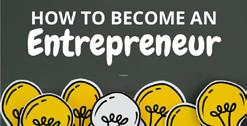
Learning and Development lies at the heart of CFEs like the Falsebay College CFE. Students and community members are exposed to practical, industry-aligned training that equips them with both technical skills and the entrepreneurial acumen to turn ideas into viable businesses.
Through Master classes, workshops, short-term programmes, and experiential learning, participants gain confidence to pursue self-employment and innovation-driven opportunities.
An important aspect is the Entrepreneurship Step Programmes, designed to support entrepreneurs at different stages of their journey
With technology shaping industries at an unprecedented pace, CFEs place strong emphasis on digital literacy and innovation. Entrepreneurs are introduced to digital tools (AI), e-commerce platforms, and emerging technologies that enhance business efficiency and market reach. This exposure helps them to future proof their enterprises while contributing to the digital transformation of local economies.
Cultivating an entrepreneurial mindset is another cornerstone of CFE interventions. Beyond business plans and financial projections, participants are encouraged to adopt resilience, problem solving, creativity, and adaptability as key life and business skills.
This mindset shift is reinforced through Masterclasses on critical topics such as Marketing and Sales, Financial Management, Leadership, and Innovation, which expand practical knowledge and encourage ongoing learning.
The journey is reinforced through coaching and mentorship, where experienced business leaders and subject experts walk alongside emerging entrepreneurs. This support provides practical insights, accelerates learning, and fosters accountability.
Finally, entrepreneurs benefit from access to incubation centre facilities. These include co-working spaces, meeting rooms, and business support infrastructure that provide a professional base for startups. By lowering entry barriers, these facilities give aspiring
entrepreneurs the tools and environment they need to grow their ventures. Through these integrated initiatives, which focus on college students, artisan graduates from higher learning institutions, and community Small Medium Enterprises (SMME’s) ranging from start-ups to established businesses, the TVET sector is positioning itself not only as a skills provider but also as a launchpad for entrepreneurship and innovation, ensuring that learners are prepared for both work and enterprise creation.

Thozamile Thomas Mvumvu CFE Programme Manager
False Bay TVET College
Thozamile is writing in his personal capacity


Grade 11 is far more than a standalone year; it’s a critical part of the Matric journey that lays the foundation for a smoother and more successful final year of school. Waiting until Grade 12 to get serious about your studies will limit opportunities and pile on pressure; but excelling in Grade 11 acts as a powerful springboard, offering students a headstart toward higher education and a safety net for the future.
“By working hard now, students can secure provisional university or college admissions, gain clarity on their strengths and weaknesses, and enter Matric with confidence and momentum,” says Dr Alucia Mabunda, Head of Campus at IIE Rosebank College.
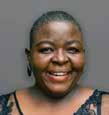
Dr Mabunda says excelling in Grade 11 is important, because doing so acts as a safety net for the future, as many colleges and universities base provisional admissions offers on a student’s performance during this year.

Furthermore, by putting in the effort now, students create a backup plan for next year, should their Matric performance not meet their expectations.
Finally, as Matric is a continuation of the work studied during Grade 11, getting to grips with this year’s content will reduce significant pressure
during the final school year.
“So as we enter the final stretch of the year, with exams rapidly approaching, we urge Grade 11 students to make the most of the months ahead to set themselves up for success,” she says.
There are still a few months left this year in which Grade 11 students can make a substantial push towards implementing a strategy that will smooth their Matric journey and ensure maximum success, says Dr Mabunda.

Understand the important role that Grade 11 final marks play both academically and logistically, and commit to making the best use of your time in the coming months.
In the next few weeks, review your diary and commitments, and schedule sufficient time to perform to the best of your ability at the end of the year, while also making a point of seeking help for those subjects you find challenging.
Holidays (October and December) are the ideal time to work on areas that need more attention, without the pressure of the usual daily demands of school attendance.

With some dedicated focus, you can eliminate problem areas which will free up time and mental energy to effectively tackle new work.
Focusing on key problem areas while you have downtime will build a stronger base and give you a headstart, freeing up more time to master new material in Grade 12.

Grade 11s should, by now, have a solid idea of what they want to do after school. If not, it’s time to pin it down. If you’re still unsure or haven’t decided on your next steps for 2026, you have to start exploring your options before the demands of Matric set in.
The Matric year is intense, with little time to reflect on your future. Waiting until then puts you at risk of making rushed decisions under pressure, especially with application deadlines looming. To avoid this, start exploring and solidifying your plans now.
Research reputable higher education institutions, both public and private. Browse their websites, connect with current or former students to learn about their experiences, reach out to a student advisor, identify qualifications that align with your ambitions, and understand the application requirements. Having this clarity before the start of the Matric year will help you stay focused on the grades and steps needed to achieve your career goals.
Good habits act as a sturdy foundation during stressful times, providing stability and resilience when challenges arise – which they most certainly will next year. Regular practices like consistent sleep sched-
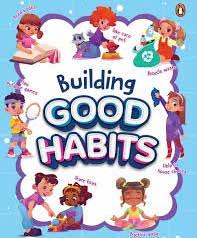
ules, healthy eating, and daily exercise boost physical energy and mental clarity, helping you stay focused under pressure.

Mindfulness routines, such as journaling or meditation, foster emotional balance, reduce anxiety and enhance your ability to cope with uncertainty. By embedding these small, positive habits into your routine now, you will build a sense of control and self-discipline, which will empower you to navigate stress with confidence and maintain your well-being no matter the circumstances.
“Your Grade 11 final exam performance will also provide a helpful benchmark for your Matric year, so that you know what needs extra attention and work, as well as what your strong and weak points are,” says Dr Mabunda.
“It is therefore important not to cruise along if you have been doing so, thinking that you’ll give it your all next year. Consider how seriously you will be taking your Matric final exams, and then try and replicate that effort right now in preparation for your Grade 11 finals.
While ensuring that your marks will soar, at the same time, you will be accruing benefits your future self will thank you for.”
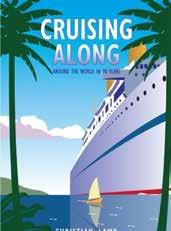
This article has been provided by Meropa Communications




Isuzu Motors South Africa has reinforced its commitment to environmental sustainability which contributes directly to the ISUZU Environmental Vision 2050, which outlines five key aspirations for long-term sustainability.
Isuzu Motors South Africa (IMSAf) has reinforced its commitment to environmental sustainability by planting nearly 4,800 spekboom trees at two community schools in Gqeberha and Johannesburg. This initiative forms part of IMSAf’s celebration of Arbor Week and contributes directly to the ISUZU Environmental Vision 2050, which outlines five key aspirations for long-term sustainability.
Known as the South Africa’s “carbon sponge,” the spekboom plays a vital role in carbon sequestration. The new plantations are expected to offset approximately 793,000 tons of carbon emissions, equivalent of all employee air travel generated during the 2024/5 financial year. Beyond carbon reduction the project is also focused on enhancing green spaces for learners and fostering environmental awareness among employees and surrounding communities.
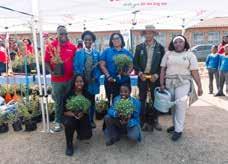
“Our commitment to environmental sustainability extends beyond compliance but also to fostering education and awareness among our em-

ployees and in our surrounding communities,” says Celestin Ndhlovu, Executive Vice President Corporate Services at Isuzu Motors South Africa. “It is our responsibility to nurture the environment we live in to create a legacy for future generations.”
In partnership with Giving The Wings Foundation, The planting took place at Khulile Primary School in Motherwell, Gqeberha and Mikateka Primary School in Tembisa, Johannesburg where a combined 2,727 spekbooms were planted. The remaining trees were distributed to IMSAf employees, who committed to planting them at their homes and in local communities ensuring that the environmental impact extends beyond the workplace.

This approach contributes to greening urban areas, where space is often limited, while also encouraging employees to involve their families in raising awareness about the global challenge of climate change.
The Giving Them Wings Foundation is a non-profit organisation dedicated to creating sustainable living solutions and empowering communities through environmental education, recycling initiatives, and food gardening projects. The foundation works with partners to promote a culture of sustainability and responsible stewardship of natural resources.
Through this Arbor Week campaign, IMSAf demonstrates that corporate sustainability can be both impactful and inclusive, combining measurable carbon offsetting with community empowerment and long-term environmental stewardship.
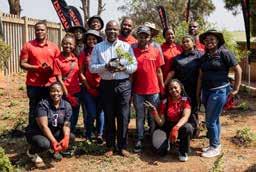
This article has been provided by Isuzu Motors South Africa:
Nandi Matomela Senior Manager Brand Strategy and Field Marketing
Asanda Fongqo External Communications, Stakeholder Relations and PR Coordinator
We added two new exhibitions to our collection on the floor. The 4IR and Mirror Maze exhibitions
The 4IR exhibition currently hosts the Humanoids (two small ones and the big one called Pepper), Virtual reality Station, Augmented Reality and the interactive displays integrated with of a number of TV screens.
This concept is through the touch screen located at the entrance to the center. Interactive display section has been created where visitors are encouraged to use traditional touch screens to immerse themselves in games and content around Science Technology Engineering and Arts and Mathematics (STEAM).
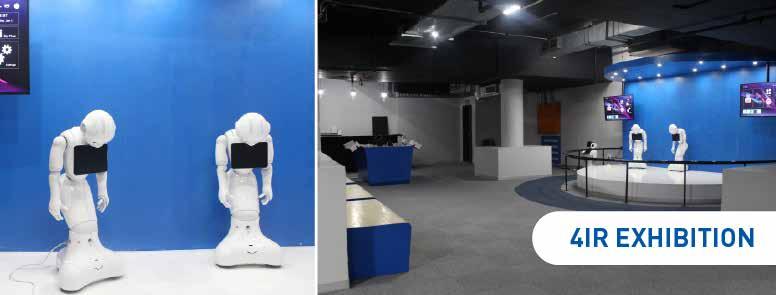
Children are provided with the opportunity to play games to train their analytical ability, improve their ability to solve puzzles and chal-

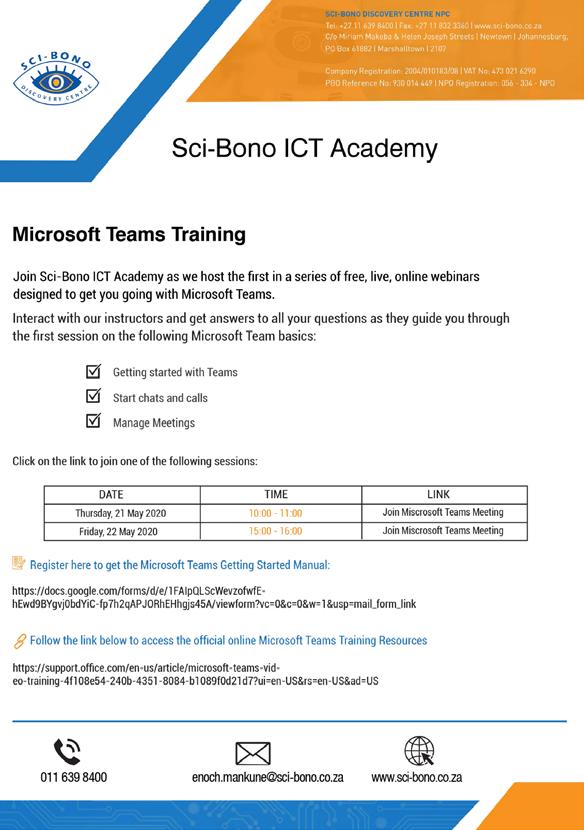
lenges. They are also challenged to explore more traditional content style, such as exploration of subjects including how Artificial Intelligence works, Machine Learning, how data transfers over networks etc.
While traditional science teaching has complex challenges around logistics, safety and costs. VR has none of these limitations. Experiments are done as often as needed with no physical costs of materials or safety concerns. Students can learn about physics and chemistry, life science etc. in a safe environment. Within VR learning occurs without any distract but with full immersion. Learning and understanding mathematics becomes easier and more fun inside of VR due to the nature of games and how they are designed.
This is designed to make learning and exploration real fun especially for little ones. Wide learning opportunities exist through this exhibition, children have many prospects to learn on, e.g. google earth exploration experience.
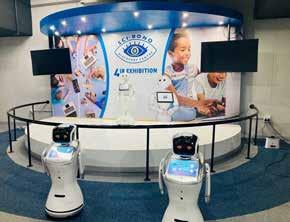
With Google Earth VR, children can travel to almost any place in the world. They can fly all over the world and explore any city, any monument and landmark anywhere in the world.The exhibition has two different types of humanoids the small one (called Sanbot Max and the Bigger one called Pepper).
The Sanbot Max robot was designed to be implemented into numerous kinds of business scenarios, providing customers and staff members with intelligent and efficient services.
Pepper is a semi-humanoid robot, which means that a human has to control it. It is designed with the ability to read emotions. Pepper recognizes faces and basic human emotion.
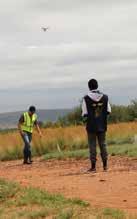
Did you know that the Clubhouse has three certified drone pilots?
They also have 10 DJI Tell drones that they will used for their drone course.
They are currently putting together content for the said course.
In addition, the Clubhouse offers programmes such as Teach Fundamentals of drones, real-life applications of drones: namely surveillance using object identification and tracking to videography for commercials and other media use.
This includes python programming that covers drone automation.



A mirror is an object that reflects an image. Light that bounces off a mirror will show an image of whatever is in front of it, when focused through the lens of the eye or a camera.
Mirrors reverse the direction of the image in an equal yet opposite angle from which the light shines upon it. This allows the viewer to see themselves or objects behind them, or even objects that are at an angle from them but out of their field of view, such as around a corner.
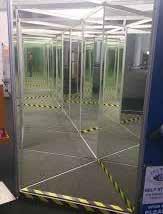
Natural mirrors have existed since prehistoric times, such as the surface of water, but people have been manufacturing mirrors out of a variety of materials for thousands of years, like stone, metals, and glass. In modern mirrors, metals like silver or aluminum are often used due to their high reflectivity, applied as a thin coating on glass because of its natu- rally smooth and very hard surface.
A maze is a path or collection of paths, typically from an entrance to a goal. The word is used to refer both to branching tour puzzles through which the solver must find a route, and to simpler non-branching patterns that lead unambiguously through a convoluted layout to a goal. The pathways and walls in a maze are typically fixed, but puzzles in which the walls and paths can change during the game are also categorised as mazes or tour puzzles Mirror Maze
The mirror maze itself is a pattern, combining several characteristics of geometric patterns: repetition, symmetry and tessellation using repeated equilateral triangles. These triangles fit together without any gaps or overlaps, creating a tessellation. Mirrored surfaces all around reflect the pattern so that it repeats and appears infinite.
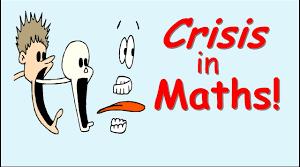
This article is provided by: Mr. James Lees, CEO of Advantage Learn.
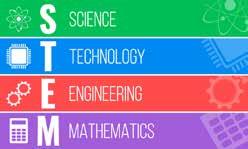
South Africa faces a stark disconnect between the supply of Science, Technology, Engineering and Maths (STEM) graduates, and the pressing demand from industry.
According to recent reports, South Africa’s Mathematics pass rate rose from 63.5% in 2023 to 69.1% in 2024, yet the number of learners writing the subject fell sharply from 268,100 to 255,762. Education experts attribute this to weak foundations and poor learner attitudes.
Statistics SA further notes that only 7% of matriculants qualify for STEM-related degrees, while the University of Cape Town stresses that Mathematics remains a critical gateway subject for higher education in Science, Technology, Engineering and Maths - making the decline in participation a direct threat to future skills development.

Addressing this scarce skills shortage starts at school – and it is a gap that Advantage Learn is bridging with its annual Quest For Your Best Maths competition.

James Lees, CEO at Advantage Learn, says that the call for investment into teachers, education tools, and innovations to support learners is loud and clear. “With only a small fraction of graduates entering STEM fields and a significant number of professional STEM roles remaining vacant, not only is our national workforce being constrained by systemic education gaps, but graduates in other fields are finding it more difficult to find employment. Increasing participation and achievement in Maths is critical.”
Advantage Learn’s online competition leverages the organisation’s Maths library – South Africa’s largest digital Maths resource aligned to the CAPS curriculum.
Learners who use the Quest resources actively see their marks improve between 15 and 20%. “Short lessons and instant feedback help improve results more efficiently, while individual achievements are recognised to boost motivation and learners’ belief in their abilities,” says Lees.
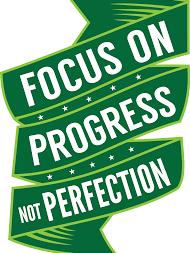
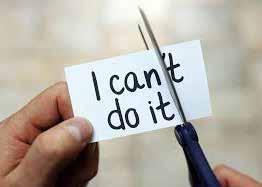
For many learners, the Maths crisis is not just about marks on a report card but about confidence lost in the classroom.
Quest For Your Best tackles this insecurity head-on because the competition turns anxiety into achievement.
Learners focus on progress, not perfection, with effort rewarded alongside results.

In 2024, more than 3,000 learners from 347 schools took part in Quest For Your Best, marking a 200% increase in participants and a 45% rise in school involvement compared to 2023.
This surge reflects the appetite for supportive, practical learning tools that make a real difference.
Thanks to the generous support of sponsors such as PPS Insurance, Snappli- fy, GG Productions, and Casio, 2025 marks a turning point: there is no entry fee, and the prizes are more valuable than before.
“Quest For Your Best is more than an exam-prep tool; it’s a pathway to greater confidence, better results, and brighter futures.

We encourage all high school learners, parents, and teachers to take part in the 2025 competition by going to the competition page, selecting “enter now,” and creating a profile. They will not only prepare more effectively for exams but also join a movement that is reshaping how South Africa approaches Maths success,” ends Lees.

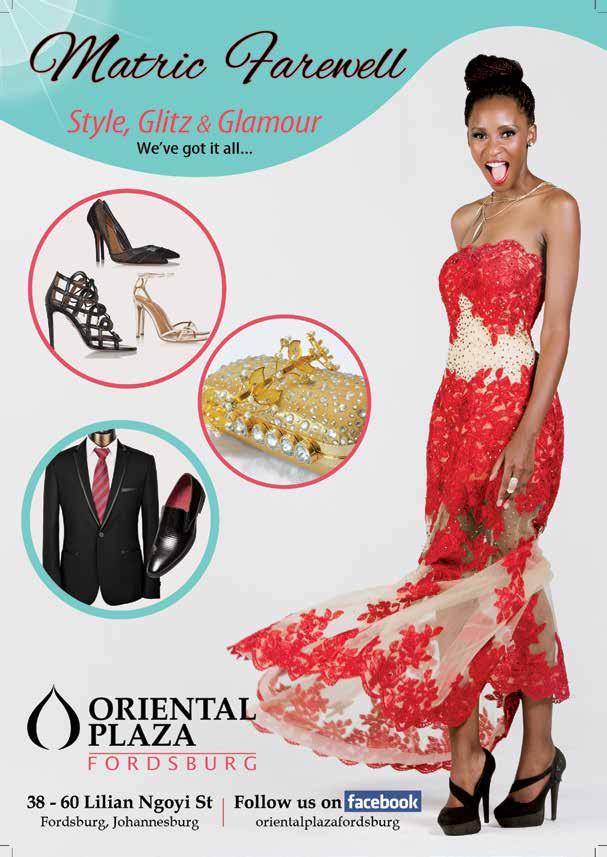
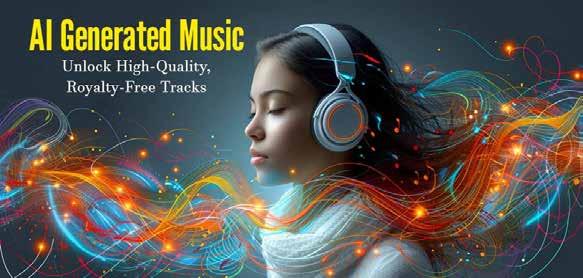
Things are moving fast now. The amount of tools available for generating songs (and videos) has exploded. And they are all for free as well.
All of this is inspired by the article here.
The quality can probably be debated, but let that be for another day.
The factor here is: this is real AI. This is not linear coding, but letting the AI engine do its job along the lines of how it evaluates the task.

The latest is that a Japanese composer, Yasushi Akimoto , got in on it. Background: He is responsible for creating chart-topping bands including Onyanko Club, AKB48 and their various spin-offs; and is a professor at the Kyoto University of Art and Design.
So, he composed a song for AKB48 himself and then let the Googe Gemini AI tool assist in creating song number 2.
The both could be voted for by the public. And the best song was …. Omoide Scroll by his AI tool. The song, Celine, did receive votes, but the overwhelming majority was for the AI song.

How did it come about? He did let Gemini be trained on his writing style, including essays, vocabulary and songwriting techniques.
It then generated the lyrics for a new song and chose which of AKB48’s members (there are 43 in total) would perform the lyrics and choreography
The entries were:
• Cécile. Written by Akimoto, it is a Motown pastiche with a French twist. The lyrics describe a girl’s obsession with her female best friend: “I copy the way you style your hair / Please don’t notice my love for you.” Akimoto chose AKB48’s current band leader Kuranoo Narumi to sing the lead vocal.

• Omoide Scroll. Written by AI Akimoto, takes a more modern approach, with a lite-techno backing and a group chorus. The title means “memory scroll” and the lyrics depict heartbreak in the smartphone era: “I stop the scroll of memories / Like the battery light fading out.”

After analysing interviews with AKB48, the AI chose newcomer Ito Momoka to perform the song, highlighting her ability with emotional storytelling.
Which one would you select as the best?
The National Student Financial Aid Scheme (NSFAS) is a government entity under the Department of Higher Education and Training (DHET)
Supports access to and success in, higher education and training for students from poor and working-class families who would otherwise not be able to afford the cost of studies at a public university or Technical and Vocational Education and Training (TVET) college.
•Provides financial aid to eligible students who are studying or plan to study at any of the 50 TVET colleges or the 26 public universities in South Africa
•Identifies students who qualify for the bursary
•Provides bursaries to students
• All South African citizens
• All SASSA grant recipients
• Applicants whose combined household income is not more than R350 000 per annum
• Persons with disabilities with a combined household income of not more than R600 000 per annum
• Students who started studying at a university before 2018 and whose household income is not more than R122 000 per annum
What does the NSFAS bursary cover?
• Registration
• Tuition
• Book allowance
• Accommodation allowance
• Transport allowance
• Food allowance
• Personal care allowance
Does the NSFAS bursary offer any additional support for students with disabilities?
Yes, NSFAS further supports funded students with disabilities through an additional allowance that covers:
• Medical assessments
• Assistive devices
• Human support to cover for the cost of a caregiver, guide dog, scribe or tutor.
How, where and when can one apply for NSFAS?
The 2021 application season will be communicated through media, social media and the NSFAS website www.nsfas.org.za.
Applications are submitted online through the NSFAS website: www.nsfas.org.za
To apply for NSFAS funding students must have a registered myNSFAS account If you plan to study in 2021 and require support from NSFAS, you may open your myNSFAS account now to keep updated with the latest funding information.
Connect with us using the following channels:
NSFAS Connect: www.nsfas.org.za and log into your myNSFAS account
NSFAS Connect gives you access to quick facts and frequently asked questions. Applicants and students can also submit and track a query for further assistance.
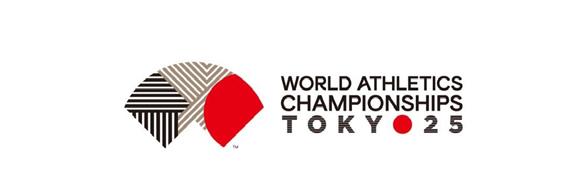
This is the ‘Oscars’ of track and field championship. It covers all the disciplines we love to see and has got all the excitement and drama we can expect.
All of this is from Wiki and articles on BBC.
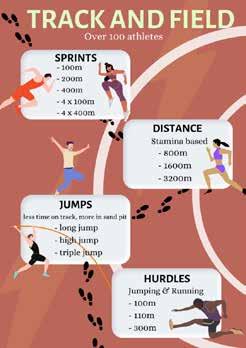
Wiki: “Alongside the Olympic Games, the championships represents the highest level of senior international outdoor athletics competition for track and field athletics globally”. It is held every two years.
The latest one finished 21 September 2025 and was held in Tokyo. After all, they had the stadia from four years back after the Olympics.
What disciplines do we typically see? Without going through it all, we can mention: Relay, long jump, pole vault, high jump, running (very many distances), discus, hammer throwing, marathon, half-marathon, triple jump and probably some I couldn’t find.
What is important is that this is where we also see the ‘big’ names: Bolt, Gail Devers, Carl Lewis, Mo Farah and so on. All there!
However, according to BBC here, it is not so easy after all. The sport in itself is huge, but the money is not there.

There are big sponsors in the likes of Nike, Adidas, Coca-Cola, Emirates, Visa and so on. However, the prize money is not great. There is a pool of some $10 million, but it only caters for some $150,000 per event (or less I fear).
The ‘sweetener’ is the personal sponsorships for the athletes. And that after all be rather big money.
But there is another problem: climate change is real and competing during summer in the major cities might not be possible anymore! It is simply too hot for outdoor events!
BBC: “The opening days of the [2025] championships were dominated by discussion around the conditions the athletes had to contend with - particularly in the endurance events - as temperatures exceeding 30C were accompanied by stifling humidity above 90%”
We have seen the same in Wimbledon.

“Lord Coe said events such as the marathon may need to be held separately, at a different time of the year, at such competitions to protect athletes from unsafe conditions in future. That’s not easy because you’re going even into the autumn, early winter months to cities that are still very hot.

This will impact all outdoor sports, Olympics as well – soon.


ANDThe Athletics disciplines are of course also interwoven with the Olympics. We see more or less the same disciplines within these two events.

So why have a separate Athletics Championship competition. Here is the catch. The Olympics are run by different federations (like the Athletics body). These federations are independent of Olympics and can set their own events – like the recent one in Tokyo – the Athletics World Championship.
I quote from here: ““Here, Associated Press Deputy Sports Editor Howie Rumberg sorts it all out.
Olympic champ, world champ: what’s the difference?
An Olympic champion is only an Olympic champion. Because the Olympics are made up of 33 sports, each run by a federation, those federations can hold their own world championships. And they declare world champions at their events.

What does that mean in terms of records?
So in sports like gymnastics and athletics and swimming, you have two

sets of records: the Olympic record, which is only set at an Olympics; and the world record, which is the record that is set in their seasons. Any sanctioned event can have a world record held or a world record set.
There are also times where the Olympic record IS the world record, because they set the world record at the Olympics. But they’re not the exact same thing.

So, to be clear: You can hold an Olympic record, yu can hold a World record or you could hold both? You could hold a record that’s both, yes. But the record that’s both would have to be set at the Olympics. And there are standards like, say, the depth of the swimming pool or the type of surface on the track that everyone’s obligated to follow.
It’s worth noting that you have more opportunities to set a world record than you do an Olympic record. So in some ways, an Olympic record, even if it’s not as good as a world record, has its own unique glow because being an Olympian is thought of, obviously, as the pinnacle of sports”.


A new bright future looms. The SIM card is dead. Well, maybe not right now, but it is on its way out.
The solution is of course software. The e-SIM. It sounds very simple. … and it is, really.
All the info stored on the SIM card can easily be sitting in memory on the device. The form factor (the size!) of memory chips is very small anyway and now we save ‘space’ inside the cell phone as there is no need for a SIM tray and connectors and all things internally. It is all software running.
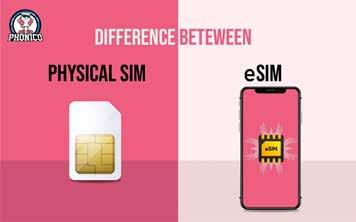
There is more to it, however, but the advantages are obvious:
Wiki says:
• Several SIMs can be stored at the same time.
• There is no need to obtain, store, and insert/eject (and potentially lose) small physical SIMs.
• If the phone is stolen, it can be tracked by “find my phone” services, while a physical SIM can be removed.
• The risk of damaging a SIM socket’s delicate contacts inserting and removing a SIM is eliminated.
• Phones with eSIM only do not need to be built with hardware SIM holders or means to insert them. This is particularly relevant for small devices such as smartwatches.
• Users can update to a new plan or switch carriers instantly online.
• eSIMs are better suited for Wi-Fi hotspots due to seamless network switching and enhanced security.
• The eSIM chip is half the size of the smallest physical SIM card, allowing phone designers to use space for other applications.
• eSIMs provide cost savings when traveling internationally
• However, there are also a few drawbacks (Wiki):
• eSIMs cannot be easily transferred to another phone; the process usually requires technical support.
• If a phone is broken, anything restricted to the eSIM’s network becomes inaccessible; in particular, calls cannot be received, and resources (calls, SMS, data) paid for cannot be used.
• The eSIM, which allows communications to be made and charged to the account-holder, cannot be removed if having the phone repaired, or lending it to someone.
• eSIM accounts must be deleted or transferred from a phone when it is sold or disposed.
• There may be compatibility issues with some phones.
• An eSIM cannot be physically removed from a device, which some might view as a disadvantage if they are concerned about being tracked.
• If a phone is bought directly from a carrier with a SIM lock, the phone can only add eSIMs from the same carrier as the one on the physical SIM card, even after a carrier unlock
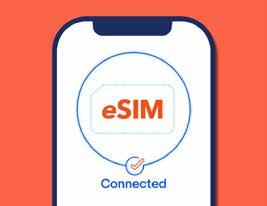

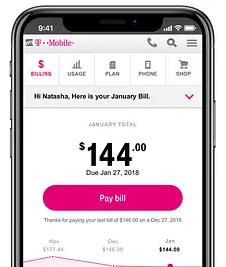
I can easily see how I will be able to switch from one provider to another (from MTN to CellC as an example). That would only require logging in on the new provider’s website and do the switch. That will be the mechanical part of it. But what about the billing? Will I automatically be accepted on the new network? Not sure. And what about if I have a contract? Will it be ported? Or what will happen there?
These are not simple questions after all. It will of course be a policy on a per-country basis.
The thing about the phone getting stolen and the SIM card being used? If there is a physical SIM card embedded in the phone, it can be opened and the eSIM removed.
That also leads into the question of where info (calls, contacts, etc etc) are stored.
My point here is: why have it on any device when it can easily sit on


a server somewhere. So there is really no need for any ‘eSIM (which will then still be a physical thing) if we look at it.
That will require that we are always connected! And that is not a given in South Africa!
It will get less complicated as there is now no need for any ‘tray’ within the cell phone for even a small eSIM. The devices can now get even thinner – as iPhone 17 shows.
All info is stored on a server and we can always get in contact with it.
That also means that theft and other people using my cell phone can get less complicated now. Blocking a cell is just blocking the account on the server.
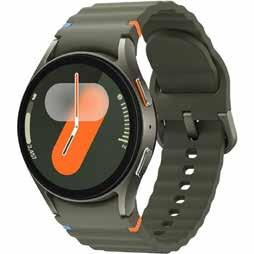
Smart-watch and anything else can now use cell phone technology. That means that the apps on a device (smart-watch) can use the network.
An example: let my watch talk to my GP via an app. And there must be so much more as well
Welcome to a new future


Music is more than just banging instruments and blowing air into some tubes.
How about A Capella? This is the singing without any accompanying instruments. Only voices allowed.
It was a part of musical tradition probably from the Jewish traditions. Here we go back some 2,000 years – at least.

Somehow, a capella got associated with religion. Judaism has a musical tradition that does not involve instruments, but so did the early Christian church.
We may ask ourselves: why did a capella get so strongly associated with religion (especially Christian religion)? Probably because the best part of all music was religious in nature and the sponsors were the nobility, strongly promoting a Christian faith.
However, we need to go a bit further in time. Wiki: “The polyphony [musical texture consisting of two or more simultaneous lines of independent melody] of Christian a cappella music began to develop in Europe around the 9th century AD, reaching its height between the 14th and 16th centuries.

That is really the highwater mark of a capella. One of the most prolific composers is Hildegard von Bingen (around 1100). She composed several pieces of music and not all of it was a capella. Here is one:
One of the more well-known composers from that time is Palestrina. Again, not all his music was a capella, but some were. Like this one:
In short: the musicians and composers had to get paid. That could only be from the nobility!

Beyond the Roman church we must also look at the Eastern traditions. The big thing there was into Gregorian Chants.


But what about new a capella music? Is it there? Listen here: And what about Beatles? Like here? And we are also there: here we are!




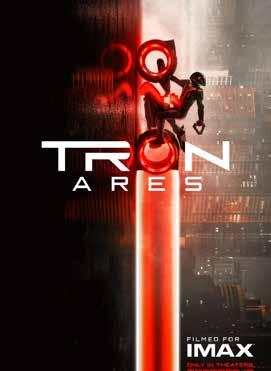
Tron: Ares follows a highly sophisticated program, Ares, who is sent from the digital world into the real world on a dangerous mission, marking humankind’s first encounter with A.I. beings.
Screening: 10 October 2025
Good fortune
Need a miracle?


A well-meaning but rather inept angel named Gabriel meddles in the lives of a struggling gig worker and a wealthy venture capitalist.
Screening: 17 October 2025


October is really into spring. We start to see the end of the year. And just to keep us smiling, we found these for you:

Vegetarian Awareness month is observed annually around the planet on October 1. It is endorsed by the International Vegetarian Union in 1978, “To promote the joy, compassion and life-enhancing possibilities of vegetarianism.
“It brings awareness to the ethical, environmental, health, and humanitarian benefits of a vegetarian lifestyle. The month of October is Vegetarian Awareness Month, which ends with November 1, World Vegan Day, as the end of that month of celebration. Vegetarian Awareness Month has been known variously as “Reverence for Life” month, “Month of Vegetarian Food”, and more
World Vegan Day is a global event celebrated annually on 1 November. Vegans celebrate the benefits of veganism for animals, humans, and the natural environment[1] through activities such as setting up stalls, hosting potlucks, and planting memorial trees.
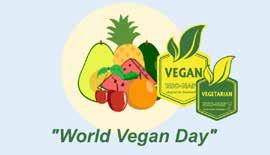
The event was established in 1994 by Louise Wallis, then Chair of The Vegan Society in the United Kingdom, to commemorate the 50th anniversary of the founding of the organization and the coining of the terms “vegan” and “veganism”.
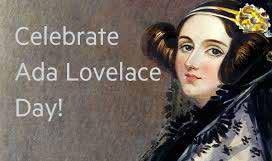
Ada Lovelace Day is an annual event held on the second Tuesday of October to celebrate and raise awareness of the contributions of women to STEM fields.
It is named after mathematician and computer science pioneer Ada Lovelace. It started in 2009 as a “day of blogging” and has since become a multi-national event with conferences.
The day was founded in the United Kingdom in 2009 by Suw Charman-Anderson.
PS: Ada lovelace has a programming language named after her: Ada is a structured, statically typed, imperative, and object-oriented high-level programming language,
Ada is an international technical standard, jointlydefinedbytheInternationalOrganizationforStandardization(ISO),andtheInternationalElectrotechnicalCommission(IEC).
AdawasnamedafterAdaLovelace(1815–1852),whohasbeencreditedasthefirst computer programmer
Hola MaHigh-School is YOUR magazine. That is why we would love to see students writing for students about student life and everything of importance to a student in any grade10-12 across the country.

What is required? That is easy:
You have to be in grade 10-12somewhere
Impeccable in your preferred language-and that might not be English. We try to be more than just English.
Passionate about your topic of choice - no dull articles here.
Do you get anything out of it?
Well, not money, sorrry. BUT if we publish your articles you will have:
Your bio in a commercial magazine A photo of yourself
You can put it all on your CV you can use us as a reference




My name is Rofhiwa and I love to write. I have used my skills to express my thoughts on international dealings of the world which have been published in Hola MaHigh-School. It has paid off, not only is my work printed for young people in the country to read, but it also contributed to me gettng a bursary from CNBC-Africa to do my post-graduate studies. Would be a lot harder to get by if I didn’t have a platform like Hola MaHigh-School.
No way out of it: Exams are looming and coming at us. that is another fact of life.
Let us look at some tips and ideas to get on top of the game. Remember, it is not like ‘old time’ where it was exam or nothing. Fail the exam and all was lost.
However, let us not think about failing anything. Because we can do it. If we have paid attention throughout the year, we have a fighting chance of succeeding.
... but it is not all about exam. Life goes on and I promise we will have something less serious.
I still want to find comspiracies, but these are hard to come about. Maybe we can invent some ourselves? that seems to be the new fashion.
So let us get past exams and start gearing up for summer holidays! Until next time!



How long is 20 seconds?
Hum the first verse of our national anthem: Nkosi Sikelel’ iAfrika
